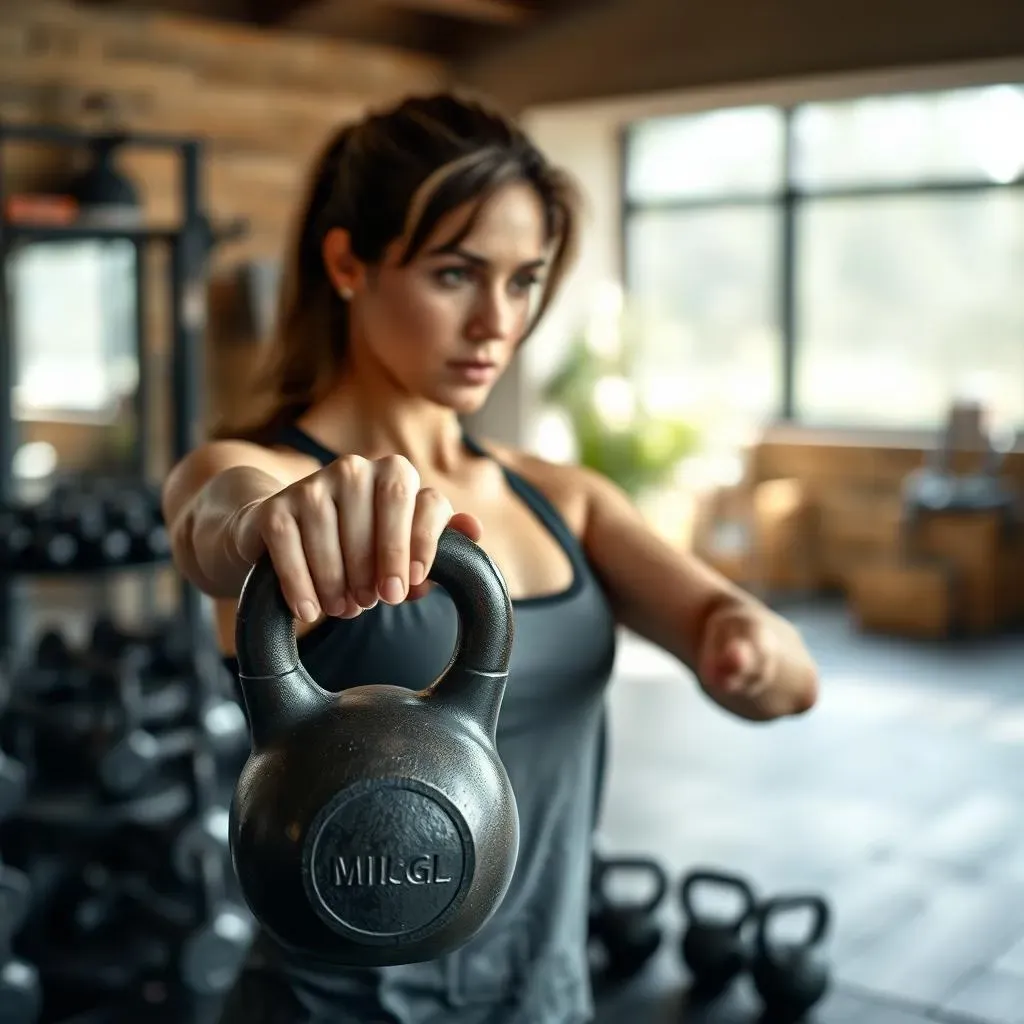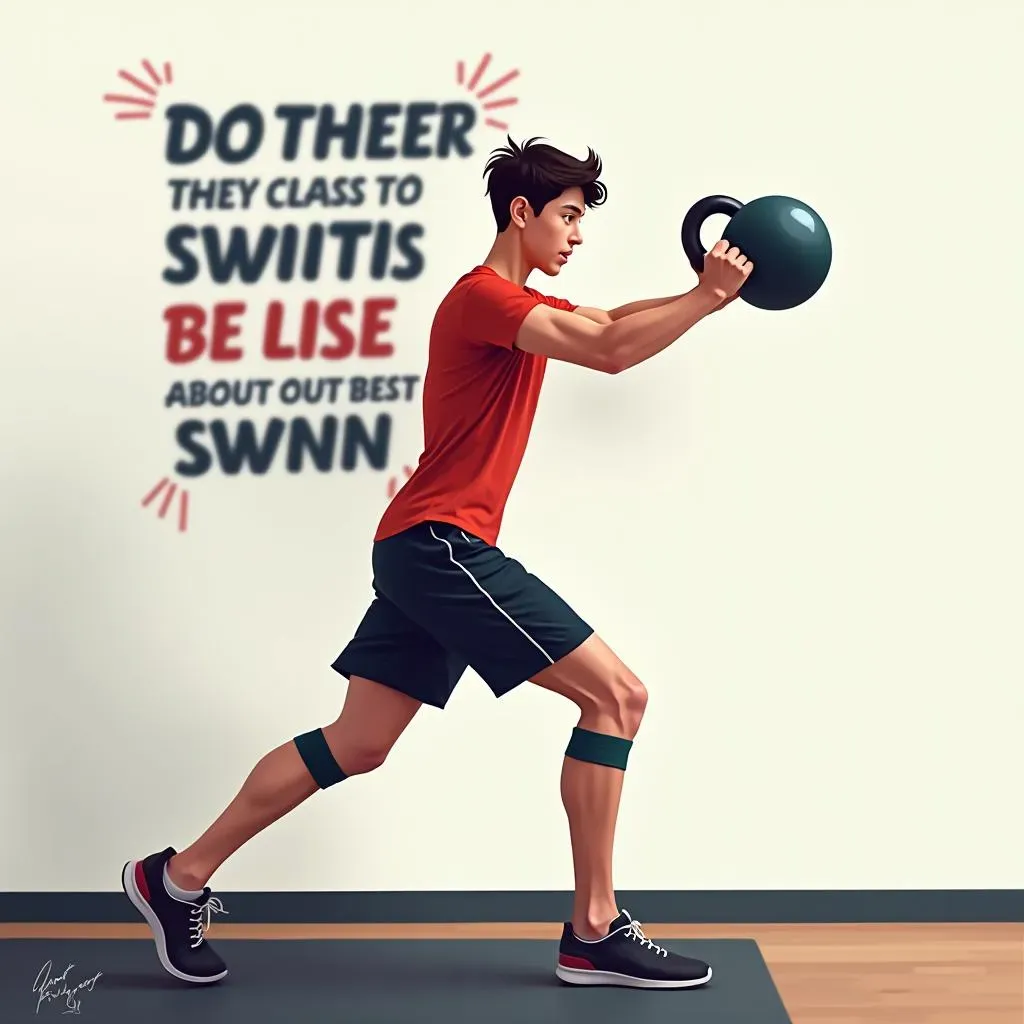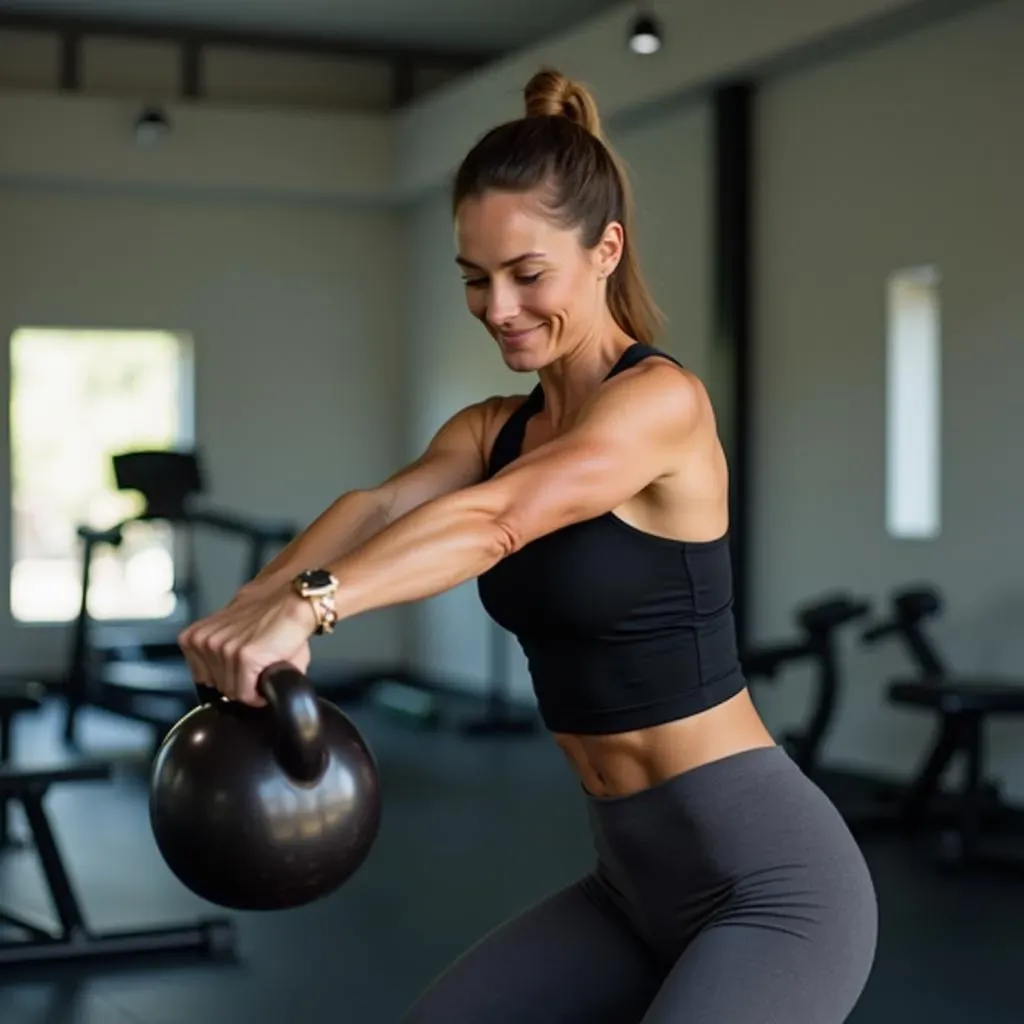Table of Contents
Ready to unlock a world of strength and fitness? This beginner kettlebell swing workout guide is your passport to a powerful, effective, and surprisingly fun fitness journey. Forget complicated gym equipment and confusing routines; we're focusing on one fundamental movement – the kettlebell swing – and building from there. This article breaks down everything you need to know, from selecting the right kettlebell weight for your fitness level to mastering proper form and technique. We'll then explore several beginner kettlebell swing workout routines, ranging from quick 10-minute blasts to more challenging 20-minute sessions. Don't worry if you've never touched a kettlebell before – we'll guide you every step of the way, ensuring you build a strong foundation for safe and effective training. By the end, you'll not only understand the kettlebell swing but also how to incorporate it into a full-body workout that sculpts your muscles and boosts your overall fitness. Let's get started on your beginner kettlebell swing workout adventure!
Getting Started: Choosing Your Kettlebell and Mastering Proper Form

Getting Started: Choosing Your Kettlebell and Mastering Proper Form
Choosing the Right Kettlebell
Picking your first kettlebell can feel a bit daunting, but it doesn't have to be! Think of it like choosing a bike – you wouldn't start with a racing bike if you've never ridden before, right? For beginners, a lighter kettlebell is your best friend. Start with a weight you can comfortably swing for 10-15 repetitions without feeling completely exhausted. Many beginners find that 8kg (18lbs) for women and 12kg (26lbs) for men is a great starting point. Don't worry about looking "weak" – focusing on proper form is far more important than lifting heavy weights initially. Remember, you can always increase the weight as you get stronger! Check out our guide on beginner kettlebell programs for more advice.
It's also worth noting that the material of your kettlebell can matter. Cast iron kettlebells are durable and reliable, while some people prefer the slightly softer feel of competition kettlebells or vinyl-coated options. Experiment and see what feels best in your hands! We also have a handy guide on the 5 best kettlebell exercises to help you get started.
Gender | Recommended Starting Weight (kg) | Recommended Starting Weight (lbs) |
|---|---|---|
Women | 8 | 18 |
Men | 12 | 26 |
Mastering the Hip Hinge
Before you even think about swinging that kettlebell, you need to nail the hip hinge. This is the fundamental movement that powers the kettlebell swing, and getting it right is crucial for preventing injuries and maximizing results. Imagine you're trying to reach something on the floor without bending your knees – that's the basic idea. Your hips should move back, your back should remain relatively straight (think of a slight arch in your lower back), and your chest should stay up. Practice this movement without the kettlebell first. Feel the movement in your glutes and hamstrings. This is where the power comes from!
Many beginners struggle with this at first, so don't get discouraged if it feels awkward. Practice makes perfect! Try standing in front of a mirror to check your form. You can also look up videos online demonstrating the hip hinge – but be warned, not all videos are created equal. Stick with reputable sources and instructors who prioritize proper form over flashy movements. Check out our beginner kettlebell workout PDF for visual aids.
- Engage your core
- Hinge at the hips, not the waist
- Keep your back straight
- Practice without weight first
Putting it all Together: The Kettlebell Swing
Now, let's combine the hip hinge with the kettlebell. Start with the kettlebell between your legs, keeping a firm grip on the handle. Hinge at your hips, keeping your back straight, and then powerfully drive your hips forward, swinging the kettlebell up to about chest height. Let the momentum of the swing do the work – don't try to muscle the kettlebell upwards. As the kettlebell swings back down, control its movement with your hips and legs, not your arms. Remember that controlled movement is key here. This is where your core strength comes into play – keep everything tight!
It's crucial to start slow and focus on proper form. It's better to do fewer repetitions with perfect form than many with poor form. Start with sets of 10-15 repetitions, taking breaks as needed. As you get stronger, you can gradually increase the number of repetitions and sets. Consistency is key, so aim for at least 2-3 workouts per week. We have a great 10-minute kettlebell workout for beginners that you might find helpful.
Beginner Kettlebell Swing Workout Routines: 10, 15, and 20Minute Options

Beginner Kettlebell Swing Workout Routines: 10, 15, and 20Minute Options
10-Minute Beginner Kettlebell Blast
Short on time but still want a killer workout? This 10-minute routine focuses solely on the kettlebell swing, building strength and endurance. It's perfect for those just starting out or looking for a quick and effective session. Remember to focus on maintaining perfect form throughout. Don't sacrifice quality for quantity! This is a great way to build your stamina before moving to longer workouts.
Here's the plan: 3 sets of 15 kettlebell swings, with 60 seconds rest between sets. That's it! Simple, right? But incredibly effective. This workout targets your glutes, hamstrings, and core, giving you a fantastic full-body workout in a fraction of the time. If you find this too easy, you can always increase the number of repetitions or sets, or try a heavier kettlebell. For more ideas, explore our 10-minute beginner kettlebell workout collection.
Set | Reps | Rest |
|---|---|---|
1 | 15 | 60 seconds |
2 | 15 | 60 seconds |
3 | 15 | 60 seconds |
15-Minute Full-Body Kettlebell Flow
Ready to step it up a notch? This 15-minute routine incorporates the kettlebell swing with other basic exercises to work your entire body. We'll be focusing on compound movements, which engage multiple muscle groups simultaneously, maximizing your calorie burn and building overall strength. This is a great way to build full-body strength and coordination.
Here's a sample routine: 3 sets of 10 kettlebell swings, followed by 10 squats and 10 push-ups. Rest for 60 seconds between each round. This routine will challenge you while still being manageable for beginners. Remember to listen to your body and adjust the number of reps or sets as needed. Once you're comfortable with this routine, you can increase the weight of your kettlebell or add more challenging variations of the exercises. For more advanced routines, check out our 15-minute beginner kettlebell workouts.
- Warm-up: 5 minutes of light cardio and dynamic stretching.
- Workout: 3 rounds of 10 kettlebell swings, 10 squats, 10 push-ups.
- Cool-down: 5 minutes of static stretching.
Beyond the Swing: Incorporating Other Kettlebell Exercises for a FullBody Workout

Beyond the Swing: Incorporating Other Kettlebell Exercises for a FullBody Workout
Adding Squats to Your Routine
Once you're comfortable with the kettlebell swing, it's time to expand your repertoire! Squats are a fantastic addition to any kettlebell workout, and they pair beautifully with swings. Think of squats as the yin to the swing's yang—they work your legs and glutes in a slightly different way, building overall strength and balance. There are many variations, from simple bodyweight squats to goblet squats (holding the kettlebell close to your chest). Start with what feels comfortable, and gradually increase the weight or difficulty as you progress. Remember, proper form is key to avoid injury. This is important, especially when you're using weights.
For goblet squats, hold the kettlebell vertically in front of your chest. This helps maintain your balance and works your core muscles more intensely. As you squat, keep your back straight, chest up, and core engaged. Aim for a depth where your thighs are at least parallel to the ground. As you get stronger, you can add variations like jump squats or front squats. Check out our beginner kettlebell leg workout for more ideas and modifications!
Exercise | Sets | Reps | Rest |
|---|---|---|---|
Goblet Squats | 3 | 10-12 | 60 seconds |
Incorporating Kettlebell Rows
Now let's target your back and biceps with kettlebell rows. This exercise is a simple yet effective way to build upper body strength and improve posture. Start with a single-arm row, holding one kettlebell in your hand while keeping your back straight and core engaged. Pull the kettlebell towards your chest, squeezing your shoulder blades together. Then slowly lower the weight back down. Remember to maintain a straight back to avoid injury. Alternate between arms, ensuring you’re working both sides equally.
If you're feeling more adventurous, try a double-arm row. This variation works the muscles of your back even more intensely. However, it requires more core strength and stability. Start with a lighter kettlebell weight if you’re unsure. Remember to maintain a straight back and engage your core throughout the exercise. For more advanced kettlebell exercises, check our core strength exercises guide.
- Maintain a flat back
- Engage your core
- Control the weight
Building a Full-Body Routine
The beauty of kettlebells lies in their versatility. You can easily create a full-body workout by combining the swing, squats, and rows with other exercises. For example, you could add in push-ups, planks, or lunges to work different muscle groups. The key is to create a balanced routine that targets all major muscle groups – legs, back, chest, shoulders, and core. Remember to listen to your body and adjust the intensity and duration of your workout as needed. Don't push yourself too hard, especially when you're just starting out. Building strength and endurance takes time and consistency.
Remember to always prioritize proper form over lifting heavy weights. It's better to do fewer repetitions with perfect form than many with poor form. Start with a routine that challenges you but doesn't leave you completely exhausted. As you get stronger, you can gradually increase the weight, repetitions, and sets. Consistency is key! Aim for at least 2-3 workouts per week, and give your muscles time to recover between workouts. For more ideas, check out our beginner full-body kettlebell workout guide.